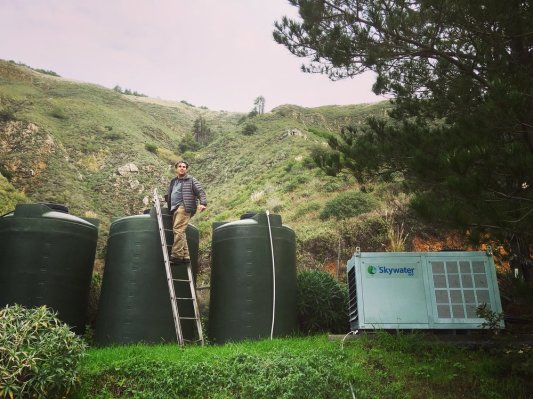
You may remember that back in May, the Water Abundance XPRIZE href=”https://techcrunch.com/2018/03/22/water-abundance-xprize-finalists-compete-in-gathering-water-from-thin-air/”>named the five finalists in its contest to demonstrate the sustainable and scalable collection of water from the air. Interestingly, none of those finalists were the winner — after one dropped out, an eliminated team stepped in and took the prize.
The goal of the program was to collect “a minimum of 2,000 liters of water per day from the atmosphere using 100 percent renewable energy, at a cost of no more than 2 cents per liter.” No simple task! In fact, I would have guessed it was an impossible one.
But many teams made the attempt anyway, and with a variety of approaches at that. The runner-up, Hawaii’s JMCC Wing, combined a large, super-efficient wind turbine with a commercial condenser unit.
The winner was Skysource/Skywater Alliance, which has already deployed many of its units abroad (and, apparently, at Miranda Kerr’s house). They can run off the grid or alternative power sources, and use an extremely efficient adiabatic distillation method.
It’s cheaper and more efficient than desalination, and doesn’t require the presence of nearby water sources or rain. Skywater boxes, which range from somewhat smaller to rather larger than a refrigerator, can produce up to 300 gallons per day; that’s about 1135 liters, so two of them would meet the contest’s requirements if the cost was low enough and it was running on renewables.
That was sufficiently demonstrated to the XPRIZE inspection teams, it seems, and the team was this weekend awarded the $1.5 million top prize despite not making it into the finals.
“It has been pretty intense but it’s really been exciting for me to see water come out of our system, because this is connected to real lives in the world,” said team member Jay Hasty in an XPRIZE video.
This doesn’t mean water scarcity is a solved problem — by a long shot — but competitions like this are great ways of promoting new development in a space and also creating awareness of it. Hopefully Skywater systems will be installed where they’re needed, but development will almost certainly continue on those created by the other teams competing for the prize.
Be the first to comment